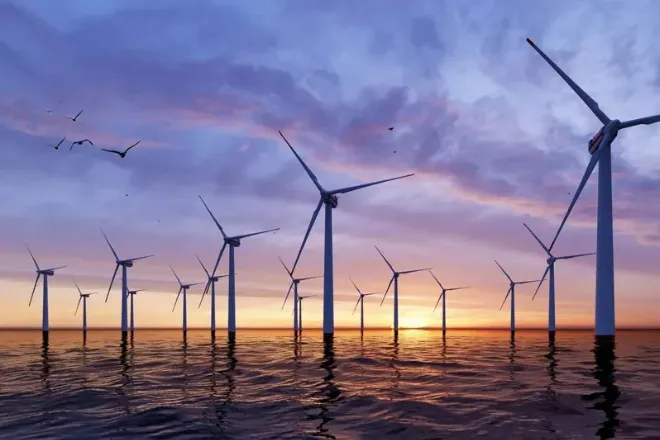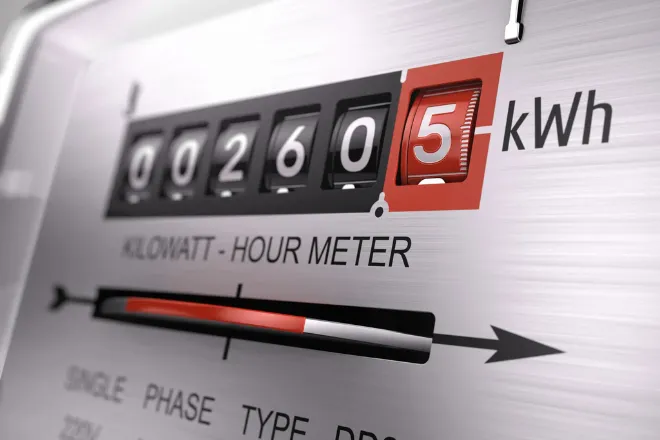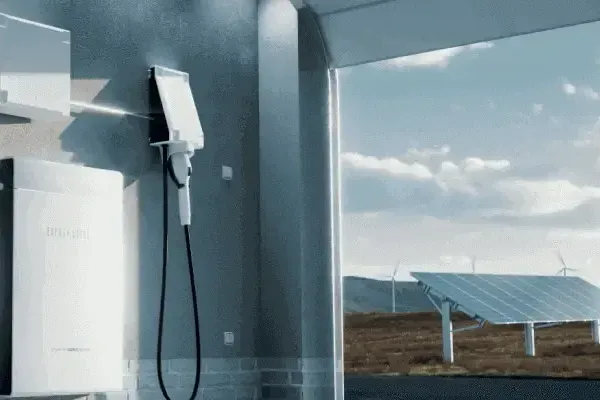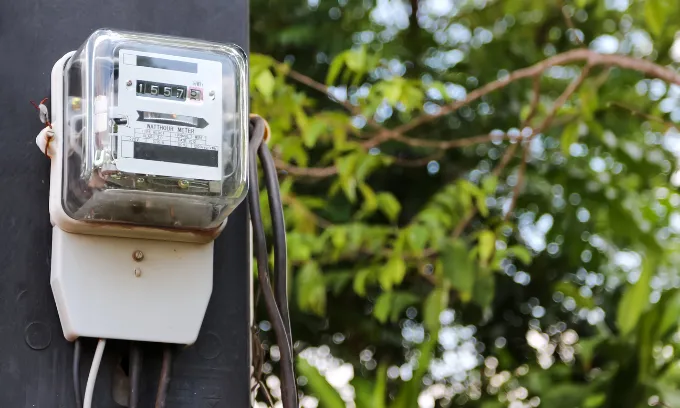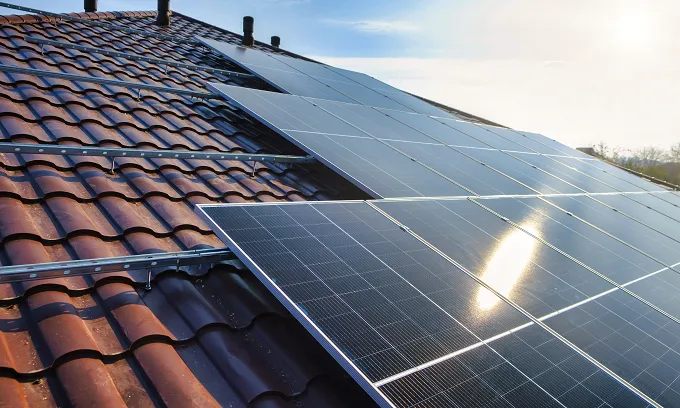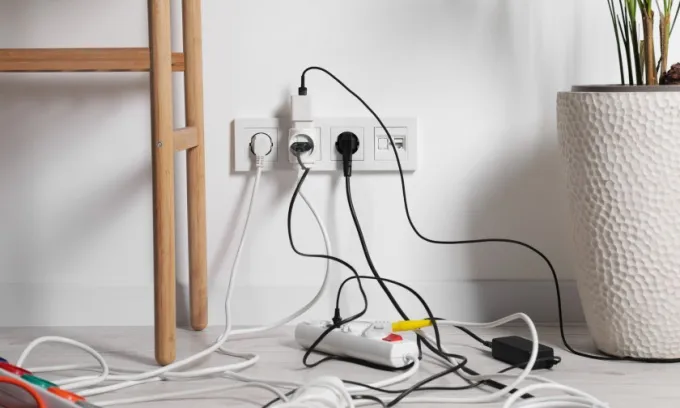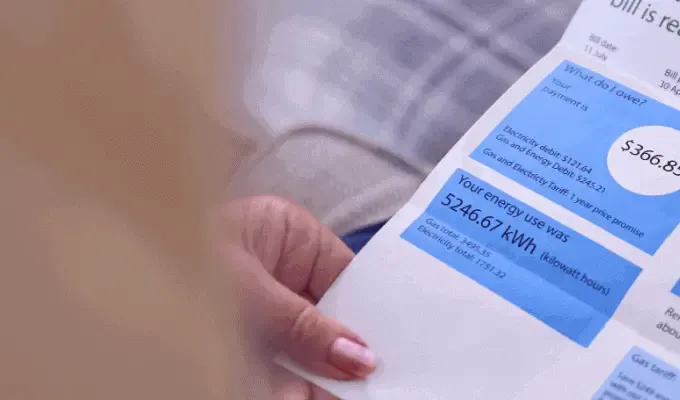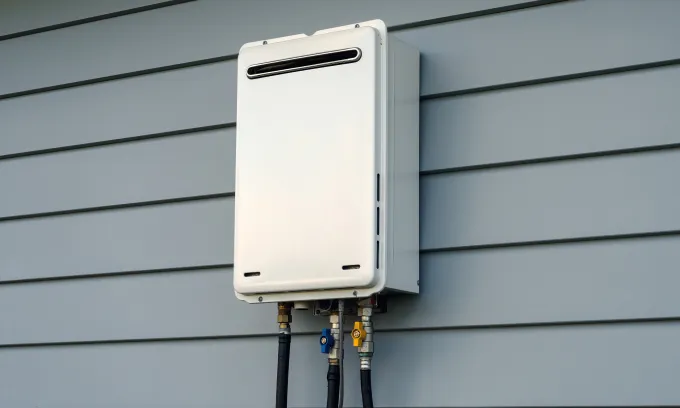How energy in WA works
In WA, the energy market offers two types of energy — electricity and gas.
Traditionally, you’ll have to pick an energy provider and a plan for either source. Energy providers resell bulk-bought energy from the wholesale market. That energy is resold as ‘plans’ to customers like you. Each plan explains how you’re to be charged for your energy use.
However, the WA energy market operates differently between electricity and gas.
WA electricity market
The WA electricity market is regulated, with competition and pricing controlled by the Economic Regulation Authority. This means customers cannot choose their own electricity providers or plans, nor is there any variety in pricing.
Virtually all WA residential customers do not have any say over their preferred provider or plan. We’ll explore this more in later sections.
WA gas market
The WA gas market is not ‘competition regulated’, meaning gas providers can freely enter and exit the market to compete for customers.
However, the maximum price of gas is still regulated in the most populated areas of WA, such as:
- Geraldton and surrounding areas
- Carnamah
- Albany
- Perth metropolitan area extending north to Gingin and south to Busselton.
Gas prices outside these areas are not regulated, with gas providers freely setting their plans’ pricing and terms.
Electricity in WA and Perth explained
Electricity distributors and providers in WA
A distributor supplies energy to homes and maintains the grid’s infrastructure (e.g. pipelines, meters). This definition applies to both electricity and gas. They're also the first company you reach out to if there is a power outage.
In WA, two distributors supply electricity to two different regions:
Electricity distributors | Region in WA |
|---|---|
Western Power | Southwest Interconnected System (SWIS), |
Horizon Power | North West Interconnected System (NWIS), |
Uniquely, Horizon Power also operates as the main provider of electricity outside the SWIS. This means that Horizon Power both sells and supplies electricity.
Within the SWIS, customers are classified as either contestable or non-contestable customers:
- A contestable customer is someone who chooses their own provider. Customers in the SWIS are only contestable if they use more than 50 megawatt hours (MWh) of electricity annually.
- A non-contestable customer is someone who cannot choose their own provider. Because residential customers barely surpass the 50 megawatt-hour (MWh) yearly threshold, virtually all customers in the SWIS region are non-contestable by default.
Electricity plans and prices in WA
For SWIS and NWIS customers, electricity plans are generally limited to Synergy and Horizon Power as the sole providers.
Electricity prices are also government-regulated for households, small businesses and some large businesses. The Economic Regulation Authority sets the price for electricity and not the retailers.
Like other states, electricity plans still come with the same two charges — ‘supply charges’ and ‘usage charges’.
- Supply charges: A daily fixed cost you pay (in c/day) to remain connected to the power grid.
- Usage charges: A charge for every kilowatt hour (kWh) of electricity you use.
Usage charges can be further broken down into different tariffs, which are pricing structures providers follow when setting their plans’ rates.
In WA, you can expect to see the following tariffs:
Tariff name | Description | Do you need |
|---|---|---|
Single rate | A fixed rate throughout, | No |
Time of use | Different rates in peak and | Yes, or a separate If you don’t have either, |
Demand tariff | Supply and usage charges plus | Yes |
Prepaid power | Allows households to pre- | Yes |
Source: Synergy, September 2025
Depending on your distributor, you’ll have access to the tariffs and charges below.
Synergy electricity prices
Plan name | Usage charges | Supply charges | Tariff type |
|---|---|---|---|
Home Plan | – 32.3719c/per unit | 116.0505c/day | Single rate |
Electric Vehicle | Peak electricity charge: Super off peak Overnight electricity Off peak electricity | 129.2269c/day | ToU tariff |
Midday Saver | Off-peak rate: Peak rate: Super off-peak rate: | 129.2269c/day | ToU tariff |
Home Business | First 20 units per day: Next 20 (1,650 units) Over 1,650 units per | 204.7848c/day | Block rate |
Source: Synergy, September 2025
Horizon electricity prices
Plan name | Usage charges | Supply | Tariff type |
|---|---|---|---|
A2 – | – 32.3719c/per unit | $1.1605/day | Single rate |
K2 – | – First 20 kWh per day: 33.8181c/kWh – Next 21-1,650kWh per day: – Over 1,650kWh per day: | $2.0478/day | Block power |
Prepaid Power | – 32.3719c/kWh | $1.1605/day | Prepaid |
Source: Horizon, September 2025
Gas in WA explained
Gas distributors in WA
In WA, all gas transmissions are handled by one distributor: ATCO Gas.
ATCO Gas alone operates the following distribution systems:
Distributor | Distribution systems | Regions saved |
|---|---|---|
ATCO Gas | Mid-West and South-West | Geraldton, Eneabba, Bunbury, |
Kalgoorlie Gas Distribution | Kalgoorlie-Boulder region | |
Albany Gas Distribution | Albany |
Usually, you’ll only need to reach out to ATCO Gas in the following situations:
- If you need to set up a new gas connection.
- If you’re experiencing a gas outage.
- If you need to submit a manual gas meter read.
Gas plans in WA
There are two types of natural gas plans – ‘standard contracts’ and ‘market contracts’.
In both types, their estimated annual prices are calculated from a fixed annual usage figure, which is based on the average usage provided by a selection of retailers.
Each plan charges you for your actual gas usage, which is measured in megajoules (MJ).
Standing contracts
Standing contracts (also called standing offers) are regulated by the WA State Government to give Aussies a fair price for gas. Regulation only applies to homes that consume less than one terajoule of gas (1,000,000 MJ) a year in the following regions:
- Geraldton and surrounding areas
- Carnamah
- Albany
- Perth metropolitan area extends north to Gingin and south to Busselton.
Things to note:
- Standing contract usually reflect the most a gas provider will charge you.
- If you’re on a standing contract, switching to a market contract could potentially save you lots of money.
- Standing contracts don’t offer discounts.
- Standing contracts don’t have a contract period, so you can stay on one indefinitely.
Market contracts
Market contracts are freely set by the provider with their preferred gas rates, terms and discounts.
- Market contracts are almost always a better value than standard contracts.
- Market contracts can have either fixed or variable usage rates. Variable usage rates can change frequently, while fixed rates are locked in until the contract expires.
- Market contracts can cost more than standing contracts, but this is not common.
Cheapest gas plans in WA
Here’s a handful of the cheapest gas market contracts on our database in WA.
Provider | Plan name | Est. annual cost (inc. all discounts) | Est. annual cost (ex. conditional discounts) | Basic Plan Information |
|---|---|---|---|---|
Origin Energy | Go Variable | $1,937 | $1,937 | |
Alinta Energy | Fair Go 40 | $2,517 | $2,517 | |
Kleenheat | Monthly Energiser | $2,663 | $4,001 | |
AGL | Savers | $2,760 | $2,760 |
Gas prices and rates in WA
Gas plans, like electricity plans, can be broken down into two charges — ‘supply charges’ and ‘usage charges’.
- Supply charges: A daily fee for being connected to the gas network.
- Usage charges: The usage rate applies to gas that you actually use and is measured in cents per MJ.
Their usage charges are priced according to two tariffs — single rate and block rate tariffs:
- Single rate tariffs: A fixed rate for their gas usage throughout the day.
- Block rate tariffs: Customers are charged differently based on how much gas they’ve used. For example, a rate of 4c/MJ may apply to the first 60MJ of gas used in one day and the next 60MJ may then be charged at a rate of 3c/MJ.
On market offers, you can typically see discounts that only apply during a plan’s contract length or benefit period, such as:
- Conditional discounts: A discount that applies if you’ve satisfied the conditions (e.g. sign-up deals). Conditional discounts may be included in a plan’s advertised price. If you fail to satisfy the criteria, you won’t get the discount.
- Guaranteed discounts: A discount applied with no conditions to qualify. This is typically expressed as a percentage off a plan’s advertised price.
- Reward programs: Some plans reward you with points for every dollar spent on bills. With these points, you can usually redeem rewards (e.g. theme park tickets) via the provider’s rewards program.
All this pricing information can be found on a plan’s gas fact sheet. With our energy comparison platform, you can easily view any plan’s fact sheet by clicking the ‘Basic Plan Information’ prompts on the results page.
How to find the best gas plans in WA
There’s a lot more to choosing the right gas plan than picking the cheapest option.
Knowing how you use gas
Think carefully about how much gas you use (or expect to use):
- If your home doesn’t use much gas, a plan with lower supply charges will save you more money.
- If your home uses a lot of gas, a plan with lower usage charges will be more cost-effective.
The same rules apply to tariff types:
- If your home uses little gas, a single rate tariff is the cheaper option.
- If your home uses a lot of gas, a block rate tariff may be more affordable.
Understanding gas discounts and hidden fees
Always study a gas plan’s fine print carefully — there could be hidden fees or charges that you’re not aware of (e.g. exit fees).
More importantly, don’t allow a generous discount to mislead you. For example, plans with higher discounts may be masking higher electricity rates.
Solar in WA explained
In WA, your provider pays you with a credit for any excess solar energy you export (a feed in tariff). Here’s a quick rundown.
Solar feed in tariffs in WA
A solar feed in tariff (FiT) pays you bill credits (in c/kWh) for excess solar exported from your rooftop solar to the grid.
WA customers can export excess solar under the Distributed Energy Buyback Scheme (DEBS) if they own a solar system up to 5 kilowatts (5kW) in size.
Here are the current minimum (off-peak) and maximum (peak) DEBS/feed-in tariff rates for WA customers below:
Provider | Minimum | Maximum |
|---|---|---|
Synergy | 2c | 10c |
Horizon | Nil | Nil |
Source: Synergy and Horizon, September 2025
How to switch energy plans in WA
Step 1: Check your eligibility to switch plans
For most homeowners and renters, switching gas providers should be fuss-free. However, there may be some limitations, depending on where you live.
Gas
- Make sure you have a gas connection: If you’ve never had a gas plan before, you’ll have to set up a gas connection at home with your gas distributor. Note that establishing a new gas connection will incur a surcharge.
- If your home is not located close to a gas mains: If you live away from a gas mains (i.e. rural areas), liquified petroleum gas (LPG) could be an alternative. Be wary that natural gas-powered appliances cannot run off LPG.
Step 2: Check your current bill
Compare how other plans fare against your current plan’s rates, terms and discounts on your latest gas bill.
Under the ‘Energy usage summary’ section of your gas bill, you can also see your estimated gas usage for the year. This figure can be used to represent your estimated gas usage for the following year.
If you’d like to learn more about your power bills, you can visit our guide on reading energy bills.
Step 3: Compare energy plans based on price
Using Canstar’s fuss-free comparison platform, you can sort gas plans available in your postcode by price.
You can also filter these results for your specific needs:
- Bill details
- Billing periods
The results will provide you with an estimated annual cost and easy access to a plan’s fact sheet.
Step 4: Check tariff type and contract terms
Understanding your household energy use will reveal how you can benefit from different plans and tariff types.
Always study their fine print before committing to any one plan. All this key information can be found on a plan’s gas fact sheet.
Step 5: Review your current plan’s exit fees
Be mindful of any hidden exit fees on your current plan — all this information can be found on its fact sheet.
Step 6: Sign up with your new provider
Follow the steps outlined in Canstar’s energy comparison platform through to your new provider’s website. The full switch will require a few extra steps:
Gas
- You will need to submit your DPI (Delivery Point Identifier), which can be found on your gas bill.
- Your new provider may request a credit or identification check during the sign-up process.
- There is no need to contact your old provider and advise them of the switch. Your new provider will handle that for you.
- A final meter reading will be conducted by your old provider to determine your final bill. The time taken depends on when your last meter read was and how frequent your billing cycle is.
- You can usually expect a 10-day cooling-off period after signing up for your new plan. This gives you ample time to study your new plan’s welcome pack in case you change your mind.
- Your gas supply should not be interrupted during the switch.
Step 7: Review your plan as needed
Unfortunately, you can’t just set-and-forget a plan. Actively shopping around the market ensures you’re always on the best value plan.
- When your contract expires: Most gas providers will switch you from your market contract plan to their standing contract once your original contract expires. This means your bill could increase significantly.
- If your bill is too high: Those on a variable rate plan may find their rates abruptly changing throughout the year. Customers may end up paying much more for their plan than when they signed up.
If you sign up to Canstar’s email newsletter, we’ll remind you to check your plans regularly to ensure you’re always on top of the best deals.
WA energy rebates and concessions
The WA state government is offering energy rebates and concessions to eligible customers who need help paying their power bills.
Energy Concession Extension Scheme
Energy type
Electricity
Eligibility
- Must live in a residence where you’re charged proportionally for your electricity use through a legitimate electricity arrangement.
- Must hold one of the following: a Pensioner Concession card, Health Care card, Commonwealth Seniors or Veterans’ Affairs Gold card.
Rebate amount
- Energy Assistance Payment: $342.85.
- Dependent Child Rebate: $360.51, $94.46 for each additional child (capped at four dependent children).
- Air Conditioning Rebate: $71.80 per month x number of eligible months.
Where to apply
Apply online at the Department of Treasury and Finance Revenue WA website.
Source: WA GOV, November 2025
FAQs about energy in WA
A smart meter, also called a digital or advanced meter, records your exact energy usage every five to 30 minutes, sending your usage data remotely to your provider.
As part of the Australian Energy Market Commission’s (AEMC) accelerated smart meter rollout, your distributor is helping to install smart meters across WA. Your electricity provider is responsible for replacing your home’s (or small business’s) old meter with a smart meter:
- They will organise a smart meter installation with an electrician.
- They will coordinate with your local electricity distributor on your behalf.
If your existing meter breaks or you’re moving into a new property, you’ll probably be offered a smart meter by them.
If you’d like to upgrade sooner, you can contact your electricity provider to speed up the process. However, expect to pay an extra fee.
GreenPower is a government-led initiative where energy providers agree to match your power usage fully or partially by funding accredited renewable generators for a fee.
For example, if your energy usage charge is 30c/kWh, adding 50% GreenPower could bump it up to 35c/kWh – half of your power usage will then be matched by the creation of renewable energy.
Depending on the provider, you can opt to add the cost of GreenPower to your plan, ranging from 10% to 100% of your electricity use.
Here’s a list of WA providers offering GreenPower.
Note: We do not compare electricity plans in WA. These providers are not available on our database
- ACXargyle
- Synergy
- WINconnect
In WA, an embedded network is a contract between a site operator and an energy provider to supply electricity to buildings in a specified area. The operator then purchases electricity in bulk to resell it to residents or tenants.
The WA government is working on the regulation of embedded networks, ensuring customers living in them enjoy the same protections as non-embedded network customers.
Embedded electricity networks in WA are found in multi-residential areas, like:
- Apartment complexes
- Retirement villages
- Shopping centres
- Caravan parks.



